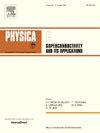47 kA时CFETR CSMC的淬火稳定性模拟
IF 1
3区 物理与天体物理
Q4 PHYSICS, APPLIED
Physica C-superconductivity and Its Applications
Pub Date : 2025-09-08
DOI:10.1016/j.physc.2025.1354786
引用次数: 0
摘要
中央电磁模型线圈(CSMC)是中国聚变工程试验堆(CFETR)的关键部件,负责产生高达12 T的峰值磁场,这对于确保聚变反应堆约束系统的正常运行至关重要。为了验证CSMC磁体的稳定运行,在达到峰值磁场时对CSMC各线圈进行了淬火稳定性分析。本文详细研究了47 kA工作电流下CSMC的磁场分布。此外,利用CryoSoft代码THEA估算了电磁干扰下CSMC磁体系统各线圈的最小猝灭能量(MQE)和温度裕度,对应于最大磁场条件。对五种线圈的最小淬火能量和温度裕度进行了比较,从而确定了最容易淬火的线圈。进一步分析表明,扰动长度及其沿冷却通道的轴向位置显著影响局部淬火灵敏度。本文章由计算机程序翻译,如有差异,请以英文原文为准。
Quench stability simulation of the CFETR CSMC at 47 kA
The Central Solenoid Model Coil (CSMC) is a critical component of the China Fusion Engineering Test Reactor (CFETR), responsible for generating a peak magnetic field of up to 12 T This is essential for ensuring the proper operation of the fusion reactor's confinement system. To verify the stable operation of the CSMC magnet, a quench stability analysis is conducted on each coil of the CSMC when the peak magnetic field is reached. This paper provides a detailed study of the magnetic field distribution of the CSMC under the operating current of 47 kA. Additionally, the CryoSoft code THEA is used to estimate the minimum quench energy (MQE) and temperature margin for each coil of the CSMC magnet system under electromagnetic disturbances, corresponding to the maximum magnetic field condition. A comparison of the minimum quench energy and temperature margin of the five coils is made, leading to the identification of the most susceptible coil to quench. Additional analyses further reveal that the disturbance length and its axial location along the cooling channel significantly affect local quench sensitivity.
求助全文
通过发布文献求助,成功后即可免费获取论文全文。
去求助
来源期刊
CiteScore
2.70
自引率
11.80%
发文量
102
审稿时长
66 days
期刊介绍:
Physica C (Superconductivity and its Applications) publishes peer-reviewed papers on novel developments in the field of superconductivity. Topics include discovery of new superconducting materials and elucidation of their mechanisms, physics of vortex matter, enhancement of critical properties of superconductors, identification of novel properties and processing methods that improve their performance and promote new routes to applications of superconductivity.
The main goal of the journal is to publish:
1. Papers that substantially increase the understanding of the fundamental aspects and mechanisms of superconductivity and vortex matter through theoretical and experimental methods.
2. Papers that report on novel physical properties and processing of materials that substantially enhance their critical performance.
3. Papers that promote new or improved routes to applications of superconductivity and/or superconducting materials, and proof-of-concept novel proto-type superconducting devices.
The editors of the journal will select papers that are well written and based on thorough research that provide truly novel insights.

 求助内容:
求助内容: 应助结果提醒方式:
应助结果提醒方式:


